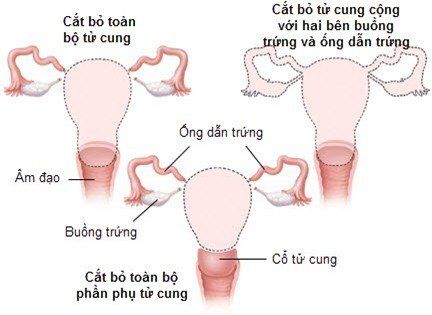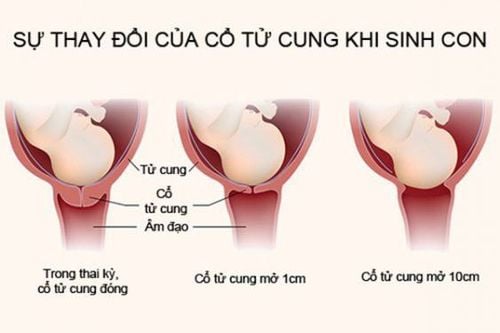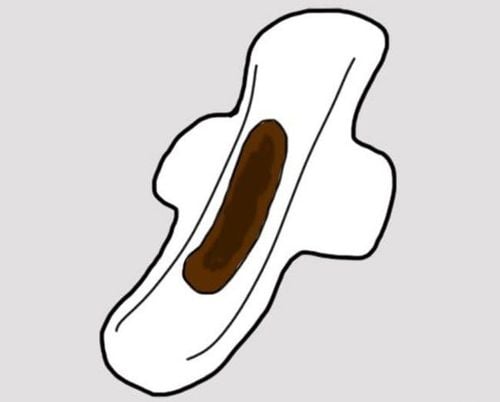This is an automatically translated article.
The article is professionally consulted by Master, Doctor Ly Thi Thanh Nha - Department of Obstetrics and Gynecology - Vinmec International Hospital Da Nang.
Uterine atony is a dangerous condition that can occur after birth. Measures to manage uterine atony after delivery must be done quickly, otherwise there is a risk of serious complications for the mother.
1. What is postpartum uterine atony?
Uterine atony is a condition in which a woman's uterus cannot contract after the birth of a baby. This symptom is quite serious and is the leading cause of postpartum haemorrhage which is very dangerous, which can be life-threatening for the mother.
Normally, the uterine muscles will automatically tighten or contract to shed the placenta (placenta) after delivery. This contraction helps tighten the blood vessels attached to the placenta and helps prevent bleeding. In case the uterine muscles are not contracted strong enough, the blood continues to flow freely, leading to haemorrhage, causing the mother to lose too much blood.
If a woman has uterine atony, immediate emergency care is needed to limit bleeding, as well as to supplement blood loss. The rate of pregnant women dying during childbirth because of postpartum hemorrhage is quite high. However, early detection and proper management of postpartum uterine atony will provide hope for a full recovery for women who unfortunately experience this condition.
2. How to deal with uterine atony
The general aim of the treatment of uterine atony is to stop bleeding and compensate for the loss of blood, as well as preserve the woman's reproductive function if possible.
2.1. Mild and moderate cases For mild and moderate cases, the management of postpartum uterine atony includes:
Manual Uterine Compression: The obstetrician will place a hand in the vagina and push the uterus upward , at the same time, with the other hand, press on the fundus of the uterus through the abdominal wall and massage. This is a professional operation that requires a skilled and experienced doctor to achieve the best results; Use of uterotonics: Commonly prescribed drugs are oxytocin, methylergonovine, prostaglandins, and others. Corresponding to each uterotonic drug, there will be careful requirements for pregnant women with unstable blood pressure, cardiovascular disease, asthma, digestive disorders, chills, fever or at risk of thrombosis; Transfusion of blood, fluids and blood substitutes to the mother as soon as possible;

2.2. Severe cases In cases where the mother has heavy bleeding or even signs of bleeding, the doctor can prescribe a few treatment measures as follows:
Surgery to precisely clamp the blood vessels in the uterus that are causing the bleeding. bleeding: The statistics show that this method has a fairly high success rate, not only saving the patient's life but also preserving the uterus, maintaining the reproductive function later; Uterine artery ligation: An artery that supplies about 90% of the blood to the uterus. The ligation site is usually 2cm lower than the transverse incision in the uterus. Although part of the uterine muscle will also be tied, the arteries and veins of the uterus must be completely ligated. According to experts' research, 95% of cases of bleeding are controlled after applying this intervention procedure; Uterine artery occlusion: The doctor inserts some small medical pieces into the uterine artery to stop blood from continuing to flow to the uterus; Hysterectomy: If the above methods don't work, your doctor will consider this last resort. Hysterectomy has a good ability to stop bleeding if the bleeding is coming from the uterus, cervix, and vaginal vault. Conversely, this technique will not be effective in cases of bleeding from the lower segment. Partial hysterectomy is faster, but total hysterectomy is still preferred. It should be noted because this technique has quite high requirements on the professional level of the surgical team;

3. Complications of postpartum uterine atony
Up to 90% of postpartum bleeding is caused by uterine atony. In particular, postpartum haemorrhage is the most dangerous and common among the 5 obstetric complications, severely affecting the mother's health. There are many studies and reports that conclude that this is the main cause of the increase in maternal mortality. Bleeding often occurs after placental abruption.
In addition, postpartum uterine atony also leads to many other complications, such as:
Low blood pressure, causing lightheadedness or dizziness due to low blood pressure; Anemia; Tired; Lethargic coma; Increased risk of bleeding in subsequent births; Women are more prone to postpartum depression; Hemorrhagic shock: This is a dangerous complication that can be life-threatening and requires prompt emergency care; If the mother does not receive emergency care in time or when there is a delay in diagnosis and treatment, the mother is at high risk of dying from postpartum uterine atony. On the other hand, the correct and positive treatment of uterine atony will contribute to limiting complications, saving lives and protecting the health of women after childbirth. There is no effective way to prevent uterine atony after childbirth, so choosing a reputable hospital to ensure a smooth delivery and be able to control emergency situations (if any) is key. best way.
Vinmec International General Hospital is a prestigious long-term medical address with outstanding quality maternity care. Vinmec is providing high quality Maternity - Labor Care Program. When participating in this program, pregnant women can be completely assured of their birth process, not only ensuring the highest safety but also focusing on bringing maximum comfort and comfort to the mother.
Master. Doctor. Ly Thi Thanh Nha has worked at Hue University of Medicine and Pharmacy Hospital and Quang Tri Provincial General Hospital before working at Vinmec Danang International General Hospital as it is today.
Doctor Nha has strengths and experience in diagnosing, monitoring and treating pregnancy, pregnancy pathology. Pregnancy screening. Perform caesarean section techniques. Laparoscopic surgery to treat ovarian cysts, ectopic pregnancy.
Please dial HOTLINE for more information or register for an appointment HERE. Download MyVinmec app to make appointments faster and to manage your bookings easily.














